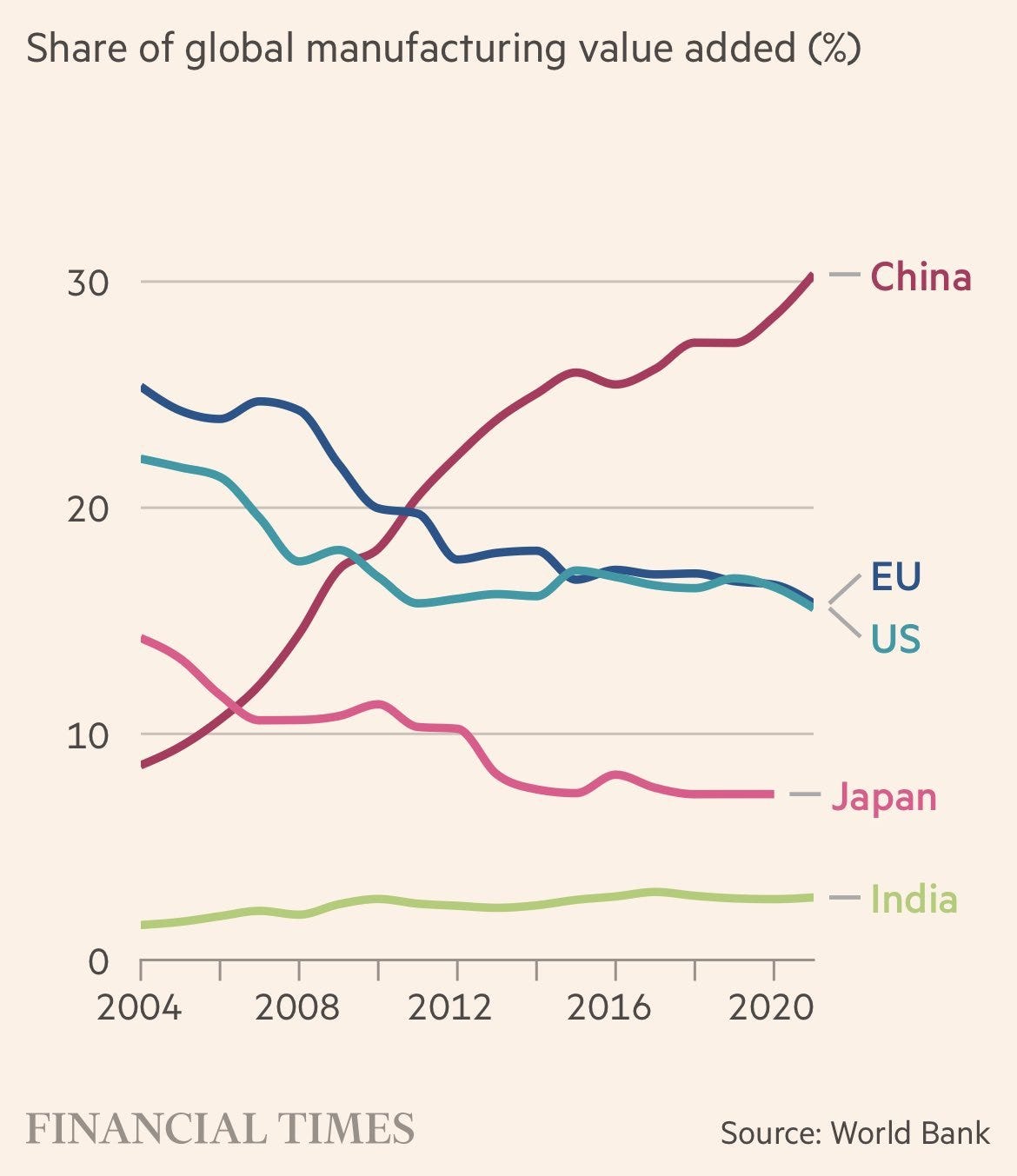Deglobalization Is Happening, But Not In The Way You Think
Is deglobalization physical or digital?
Recommended Reading:
In my last post on this topic, I ended with the following question:
“What if deglobalization is not physical, but digital?”
Here’s my answer: deglobalization occurs digitally, not physically.
As countries around the globe begin to shift to become digitally sovereign, global tech companies will face fiercer competition as they try to either expand or continue growing in emerging markets where they have an established presence.
The Evidence Against Physical Deglobalization
During the pandemic, the business press and tech insiders (Silicon Valley founders and VCs) talked extensively about American corporations restoring, friend-shoring, and decoupling from manufacturing and other labor-intensive industries in China to the U.S.
That didn’t happen. Post-COVID, China holds a plurality of the global share of manufacturing output at roughly 30%.
The Evidence For Digital Deglobalization
The TikTok ban was successfully passed in the U.S. (but has not been implemented yet), joining India in a nationwide ban. (Links)
Venezuela recently banned X for ten days.
As mentioned in my last piece, the prime minister of Malaysia was upset with Meta for censoring his posts. (Meta later apologized for the post’s removal.)
Deglobalization isn’t physical; it’s digital. American companies increasingly have to rely on acquisitions to gain access or compete in emerging markets, like Uber, which invested in Didi Global in China and acquired Careem in the Middle East.
Software isn’t global anymore; it’s becoming increasingly local in response to shifting business and geopolitical conditions.
The neutrality ascribed to Western technology companies, which allowed them to increase rapidly in the early ‘10s, has now ended. In contrast to their global options, investors can invest in indigenous tech alternatives tailored to regional geographies.
One clear example is the dating space. Primarily dominated by Tinder, Bumble, Hinge, and a few others in the U.S., I’ve been seeing more apps tailored to specific demographics pop up.
From The Economist’s recent article on dating (emphasis added):
“A more fruitful approach for dating apps may instead be to focus on narrower markets. Grindr, an app for gay men, continues to grow quickly. So does Feeld, which targets the polyamorous. In the past few years Match Group has launched apps targeted at gay men (Archer), single parents (Stir), ethnic minorities (blk, Chispa) and snobs (The League). Revenue from this portfolio of brands grew by 17%, year on year, in the second quarter of 2024.”
One in particular is Serious Pyaar, a marriage-focused dating app attuned explicitly to the dating norms and culture of South Asians, such as those from India. My HBS section mate, Abinaya Rajesh, is the company's sole founder. I encourage you to check her and her app out!
Soda








